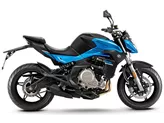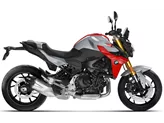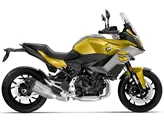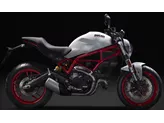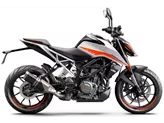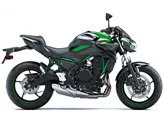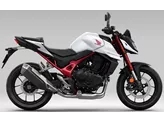BMW F 800 R 2017 vs. Kawasaki Z650 2017

BMW F 800 R 2017

Kawasaki Z650 2017
Overview - BMW F 800 R 2017 vs Kawasaki Z650 2017
The BMW F 800 R 2017 and the Kawasaki Z650 2017 are both naked bikes that offer a thrilling riding experience. However, there are several differences between the two models that make them unique in their own way.
Starting with the engine and drive train, both bikes have an in-line engine configuration and fuel injection systems. The BMW F 800 R has a more powerful engine with 90 HP compared to the Kawasaki Z650's 68.2 HP. The BMW also has a higher torque of 86 Nm compared to the Kawasaki's 65.7 Nm. In terms of displacement, the BMW has a slightly larger engine at 798 ccm compared to the Kawasaki's 649 ccm.
Moving on to the suspension, the BMW F 800 R features an upside-down telescopic fork at the front, while the Kawasaki Z650 has a regular telescopic fork. Both bikes have swing arm suspensions at the rear. The BMW's suspension is electronically adjustable, providing advanced rider assistance systems. This feature is not present in the Kawasaki Z650.

BMW F 800 R 2017
In terms of chassis, the BMW F 800 R has an aluminum frame, whereas the Kawasaki Z650 has a steel frame. The BMW's frame type is a twin tube, load-bearing engine, while the Kawasaki's frame type is tubular. These differences in frame material and type can affect the overall weight and handling of the bikes.
When it comes to brakes, both bikes have double disk brakes at the front. However, the BMW F 800 R has four-piston calipers and radial technology, while the Kawasaki Z650 has double-piston calipers and petal technology. The BMW's brakes are known for their strong performance.
In terms of dimensions and weights, the BMW F 800 R has a wider front tire at 120 mm compared to the Kawasaki Z650's 120 mm. Both bikes have the same front and rear tire diameter of 17 inches. The BMW has a wider rear tire at 180 mm compared to the Kawasaki's 160 mm. The BMW also has a longer wheelbase at 1520 mm compared to the Kawasaki's 1410 mm. The seat height of the BMW is adjustable between 790-820 mm, while the Kawasaki has a fixed seat height of 790 mm. The BMW F 800 R is slightly heavier with a kerb weight of 202 kg compared to the Kawasaki Z650's 185 kg. Both bikes have a fuel tank capacity of 15 liters.

Kawasaki Z650 2017
In terms of strengths, the BMW F 800 R has strong brakes, upgraded equipment, low weight, accessible geometry, and a characteristic sound. On the other hand, the Kawasaki Z650 offers even power delivery, a sporty chassis, compact dimensions, and a negative display.
As for weaknesses, the BMW F 800 R is somewhat pragmatic and lacks a bit of effervescence. The Kawasaki Z650 may be a little too small for tall people.
Overall, both the BMW F 800 R 2017 and the Kawasaki Z650 2017 have their own unique features and strengths. It ultimately comes down to personal preference and riding style when choosing between the two models.
Technical Specifications BMW F 800 R 2017 compared to Kawasaki Z650 2017
Pros and Cons in comparison
Pros and Cons in comparison
BMW F 800 R 2017

With a EURO4 engine, new riding modes, new instruments and new colours, the F 800 R starts the new season. It is recognisable at first glance only by the end cap on the stately stainless steel exhaust. It is one of those full-grown motorbikes that, despite its considerable sporting potential, was designed for the widest possible user group. Therefore, it is absolutely beginner-friendly (throttled), but can also inspire an experienced audience. Its character remains somewhat pragmatic, but the unmistakable, hollow sound of the inline two compensates for this.
Kawasaki Z650 2017

The Kawasaki Z 650 is the tip of the middle class for small male and female riders. On its compact dimensions, you probably won't feel comfortable as a giant. Heart-warming feelings, however, come from the engine, which delights with a very smooth pull. On the chassis side, a Kawasaki-typical tight set-up was chosen, which finds a great compromise in everyday use. The negative display is very easy to read and is reminiscent of its predecessor, the ER-6n - very nice!
Price Comparison Avarage Market Price BMW F 800 R vs Kawasaki Z650
There are a few key differences between a BMW F 800 R 2017 and a Kawasaki Z650 2017. In terms of price, the actual average price of a BMW F 800 R 2017 is about 24% higher. Compared to Kawasaki Z650 2017 there are more BMW F 800 R 2017 bikes available on the 1000PS.de Marketplace, specifically 16 compared to 11. It takes less time to sell a Kawasaki Z650 with 76 days compared to 105 days for the BMW F 800 R. Since model year 2009 1000PS.de editors have written 20 reviews for the BMW F 800 R and 31 reviews for the Kawasaki Z650 since model year 2017. The first review for the BMW F 800 R was published on 10/10/2008 and now has more than 8,900 views. This compares to more than 25,000 views for the first review on Kawasaki Z650 published on 11/8/2016.



